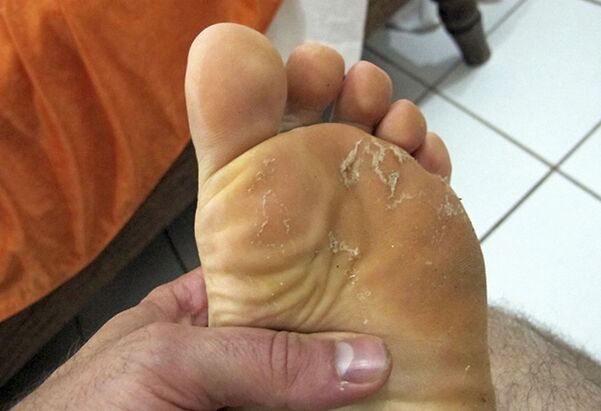
Feat fungus is a common disease that belongs to the group of dermatomycosis and develops due to the activation of pathogenic microorganisms.
The causative agents of mycoses live in plants and soil, on the body, in the body of animals and retain their life, being in the shoes or clothing of the infected, so absolutely everyone can become infected with a fungal infection.
What is mycosis of the foot?
The foot fungus is the disease caused by pathogenic microscopic fungi, which is a lesion of the skin of the interdigital gaps with the further spread of infection to healthy areas of the body.
This pathology can manifest itself at any age, but especially often the disease is diagnosed in older people and people with weakened immunity.
About 50 species of mushrooms that exist in nature are potential danger.Under the influence of favorable conditions, they are all capable of parasitic on the human body and inside it, provoking the development of systemic and local fungal pathologies.
Important!
The fungal lesion of the feet causes a change in the structure of the skin and, in the absence of timely treatment, detachment of the nail plate.
MKB code 10
According to the ICD-10, Mikoz Stop has code B35.3.
Varieties of fungal diseases on the skin
Experts distinguish several main types of foot mycosis depending on the pathogen.Each variety has its own characteristicsAnd proceeds with a number of unpleasant symptoms.
Rubrofitius
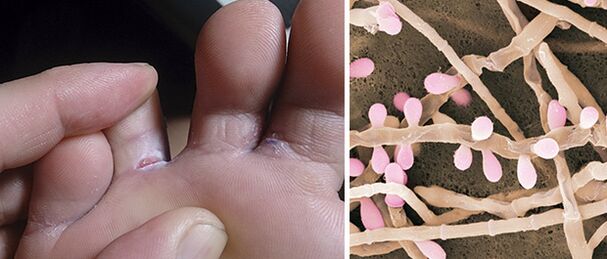
The causative agent isTrichophyte Rubrum fungus.The clinical picture of the pathology begins with the fact that the disease covers the feet and folds between the fingers, however, in the process there is an infection through the body by lymphohematogenic spread of foreign protein structures.
Candidiasis of the stop
Develops due to penetration into the human bodyThe fungus of the genus Candida.Candidiasis of the stop begins with the lesion of interdigital spaces and nails.At the same time, the area of the nail roller becomes hyperemic and edematous, and the patient can be disturbed by pulsating pain in the damage zone and severe itching.
Onychomycosis
Damage to the nail plates caused by dermatophytes, fungikind of candidate or molds.The fungi are unpretentious to the conditions of existence and are characterized by high life resistance, so with an advanced form the disease is difficult to treat.
Intriginal (interdigital) form
The most typical form of mycosis, which is determined by the damage to the interdigital folds without the appearance of signs of the pathological process on the foot.As the patient develops, cracks, peeling, erythema and maceration appear.In the future, against the background of the disease, any bacterial infection can develop.
Squamine -hyperkeratotic form
It is characterized by the simultaneous damage to both feet.The disease proceeds with severe peeling and keratinization of infected areas of the skin, as well as with the occurrence of deep cracks in the affected areas.Itching is insignificant or absent.
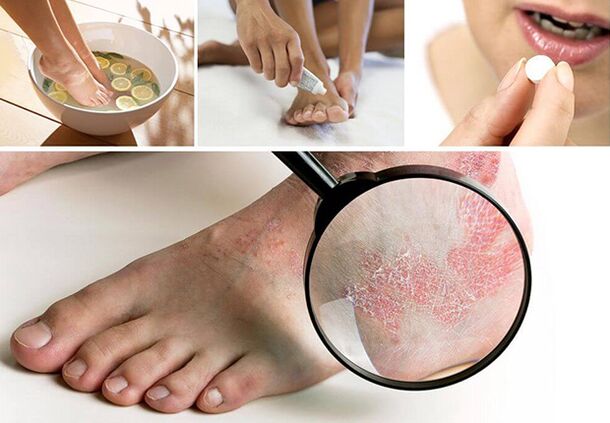
Dyshidrotic form
After the infection penetrates into the body, many bubbles with a rough surface appear on the patient’s skin, hyperemia and swelling increase, which makes the dyshidrotic form of the disease similar to eczema.After rupture, the bubbles form erosion zonesOn the heel or rise of the foot.
Erased form
A variety of mycosis has minimal clinical manifestations in the form of inconspicuous microcracks in the interdigital folds of the skin and bowlrous peeling.The patient does not experience discomfort, which is why the treatment of pathology is postponed for a long time.
Madur foot
For a long time, deep mycosis, which affects mainly the feet.The disease begins with focal inflammation in the subcutaneous tissue and gradually spreads to soft tissues, internal organs and bones.
At the initial stage, the pathology does not manifest itself, but then a seal with purulent contents and a specific smell is formed on the foot of the infected.The surface of the skin becomes disfigured and resembles the shell of the turtles.
Stages of mycosis of Stop
The incubation period of the stop mycosis is 3-14 days, after which the infected person manifests the first signs of infection.Dermatologists draw the attention of patients to the fact that the disease has several stages of development.
Initial
The patient may not suspect infection, as the initialThe stage of mycosis is perceived as ordinary dry skin.Cracks and redness appear on the foot.There is slight swelling and itching.
Average
At the middle stage, the fungus is identified without difficulty, since large pink spots appear on the skin, the peeling area increases and itching increases.
Neglected
The fungus affects both the foot with interdigital sites and the nail plate.Nails become fragile and brittle, begin to crumble and sprinkle.The skin is coarse, compacted, covered with deep cracks and separated by large layers.
Causes and symptoms of fungal damage
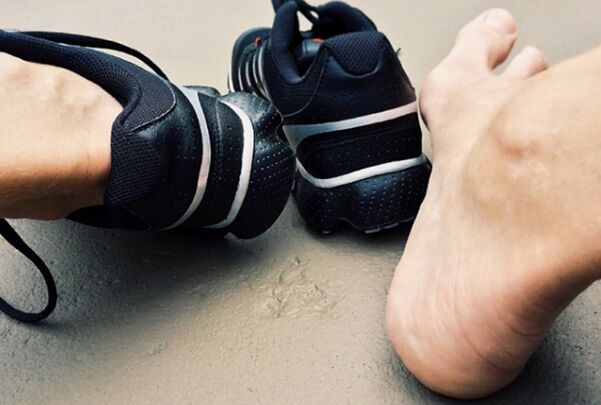
If a person is completely healthy, after direct contact with the source or carrier of infection, his personal things or household objects, infection may not occur.However, in the case when any disorders are present in the body, there is a great risk of infection.
They become provoking factors:
- weakening of protective functions;
- increased sweating or dry skin;
- prolonged medication;
- non -compliance with hygiene rules;
- circulatory violation;
- the presence of microdamines on the skin;
- Excess weight;
- foot deformation;
- Wearing tight shoes.
Depending on the localization of inflammation and the form of the disease, the fungal infection may be accompanied by the following symptoms:
- light or severe redness of the skin at the lesion;
- itching and burning;
- peeling of the skin;
- Changing the color of the nails;
- the appearance of small cracks;
- loading and thickening of the skin of the feet;
- bubble rashes;
- Unpleasant smell.
Diagnostics
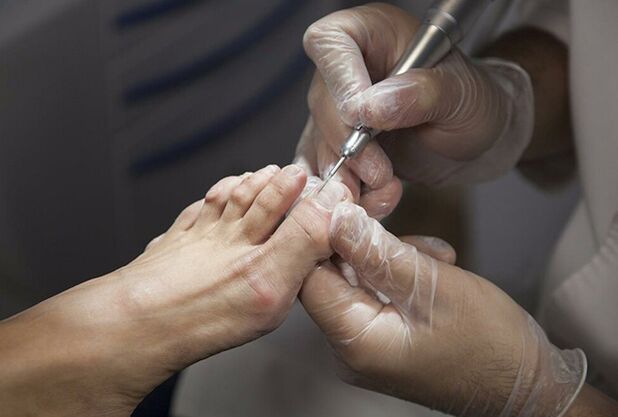
The diagnosis of fungal diseases of the feet is carried out by a mycologist and a dermatologist, which should be contacted immediately after the appearance of one or more symptoms of pathology.
The specialist will be able to identify the presence of infection during the initial inspection, but it will not be possible to establish the type of pathogen without additional laboratory tests.
Determination of the type of fungus is carried out using:
- general and biochemical blood test;
- scraping from the affected area of the skin;
- sowing the collected material for the nutrient medium;
- skin biopsy;
- A special test to confirm the presence of infection in the body.
Based on the results obtainedThe doctor diagnoses and prescribes treatmentaimed at eliminating fungal infection and symptomatic manifestations of mycosis.
General principles for the treatment of the disease on the foot and fingers (little finger)
Treatment of mycosis is carried out using effective drugs, which can be prescribed exclusively by the attending physician.Most often, the patient is prescribed:
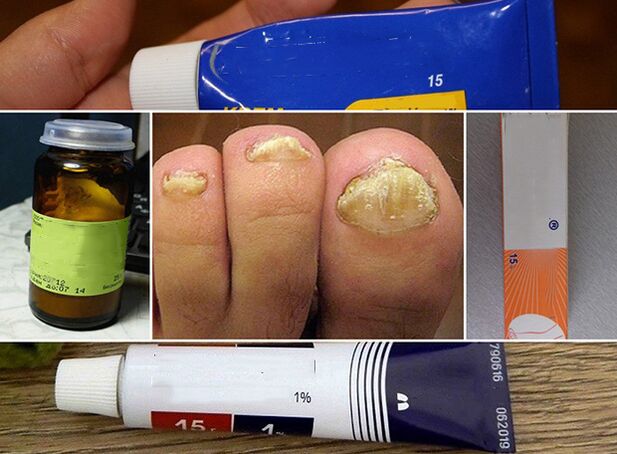
- antifungal agents for internal and external use;
- antimicotics;
- corticosteroids;
- antihistamines;
- Polyvitamin complexes.
Important!
At the initial stage of the disease, treatment can be carried out using recipes of alternative medicine.Many of them help to quickly get rid of the problem, but in some cases they are able to cause an allergic reaction.
How is it dangerous to mycosis on the sole?
If, after diagnosing mycosis, the patient refuses to treat or ignores the symptoms of the disease, his condition will deteriorate over time, and the symptoms will become more pronounced.Besides,lack of treatment threatens the occurrence of complications.Among them:
- the spread of infection to large areas of the skin;
- development of hypersensitivity of the body;
- annexation of secondary infection;
- Complications of related diseases.
Important!
Constant physical and aesthetic discomfort can lead to psychological problems.
Can mycosis of the foot go to other parts of the body?
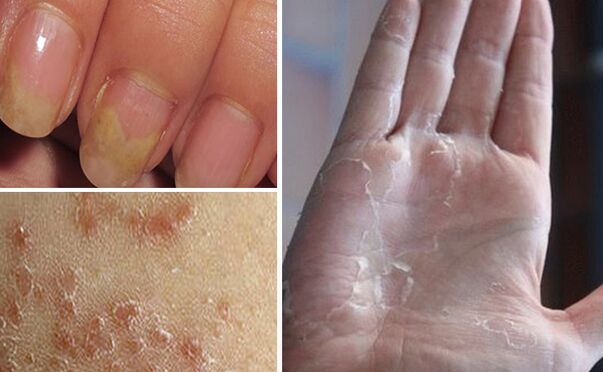
Fungal diseases do not pose a particular danger to human life, but if personal hygiene rules are not observed, infection can spread to other parts of the body, provoking the appearance of large foci of damage.
The patient can also notice the characteristic symptomatic manifestations of the patient at the later stages of the development of the pathological process, when they become on the skinrounded rashes of a pinkish shade are noticeableOr blisters with transparent contents.
Prevention of the disease
To prevent infection with mycosis, it is not enough to exclude any contacts with possible sources of fungal infection.In addition, information is to a minimum of communication with carriers of the disease and their personal things, preventive measures should also be directed at:
- compliance with personal hygiene;
- treatment of chronic diseases;
- maintaining a healthy lifestyle;
- Strengthening immunity.
The foot fungus creates a danger not only for an infected person, but also for his immediate environment, so having discovered the first signs of mycosis, you needtake all possible measures to relievefrom the disease.
To avoid complications, it is important to contact a dermatologist in a timely manner for diagnostic measures and prescribing the correct treatment using medicines.

























